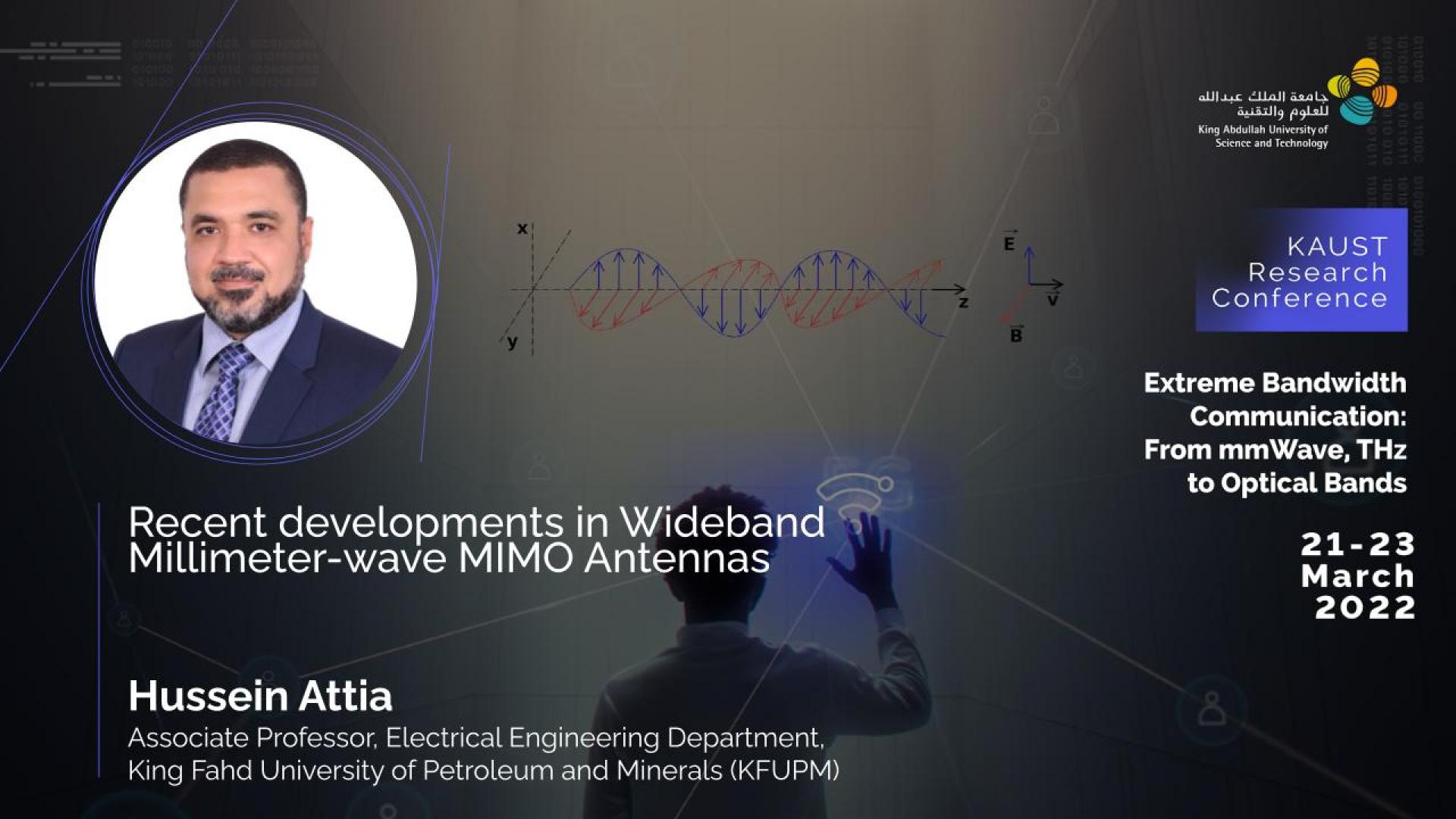Abstract
Millimeter-wave wireless systems offer high data rate, low latency, improved spectral efficiency and channel capacity, mainly when used in multiple-input multiple-output (MIMO) technology. Therefore, millimeter-wave antennas are explored to meet the user requirements of high throughput, with a very close distance between antenna elements to enable miniaturization.
However, antenna miniaturization at millimeter-wave bands has been a growing concernamong antenna engineers because of the inevitable, undesired mutual coupling between the antenna elements. This reduces the overall efficiency and gain of the MIMO antennas.
In this talk, I will demonstrate the efforts done in my research group to address the millimeter-wave antenna design challenges. Recently, we proposed a self-isolated 5G millimeter-wave MIMO tightly spaced antenna array with measured isolation (>50 dB) over the 28-38 GHz frequency band. Several rigorously optimized slots of different shapes, positions, and dimensions are etched on the radiating patch to enhance the inter-element isolation within 28-37.5 GHz impedance bandwidth. Additionally, the printed ridge gap waveguide (PRGW) technology will be demonstrated as a low loss millimeter-wave antenna array's feeding mechanism.
Brief Biography
Hussein Attia received a Ph.D. degree in electrical and computer engineering from the University of Waterloo, Waterloo, ON, Canada, in 2011.
He worked as a Research Engineer with the Coding and Signal Transmission Laboratory, University of Waterloo, from March 2011 till July 2013. He was granted a Postdoctoral Fellowship at Concordia University, Montreal, QC, Canada, from August 2014 to July 2015. Also, he was a Visiting Scholar with University de Quebec (INRS), from August 2015 to December 2015 and from June 2017 to August 2017. He is currently an Associate Professor with the King Fahd University of Petroleum and Minerals (KFUPM), Saudi Arabia. He published 90 journal and conference papers. His research interests include biomedical engineering, millimeter-wave antennas, analytical techniques for electromagnetic modeling, and metamaterials.

